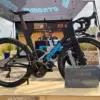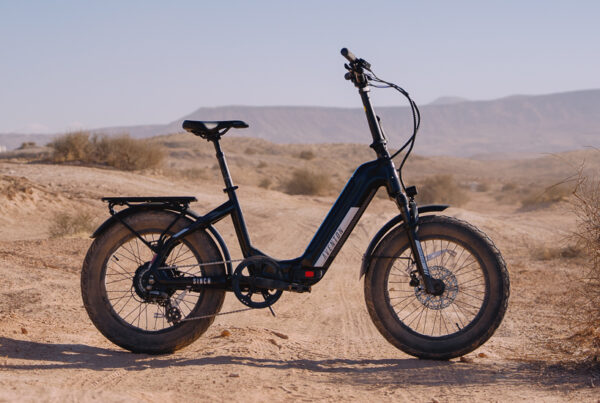The LeMond Prolog is a Class 1 e-bike, with no throttle, and a pedal-assisted speed that is limited to 20 miles per hour. It features an 11-speed Shimano GRX drivetrain with an 11-40T cassette and a 40T chainring, and the bike also makes use of some seriously cool technology – the Mahle X35 drive system.
The bike’s motor, battery, controller, and interface are integrated and wired internally through its frame. Mahle, the system’s manufacturer, is a Spanish conglomerate that develops and manufactures automotive and high-end e-bike components. Prior to riding the Prolog, I had only read about the system, so I was absolutely excited to see what it could do.
Our Circuit Test, which is explained in the graphic above, gave me an opportunity to get a feel for the small, lightweight 250W rear hub motor used by the X35 system, as well as its three pedal assist system (PAS) settings. Before making use of the motor, though, I pedaled one lap around our test track without motor assistance.
The 13.3 miles per hour I was able to achieve with no help from the motor says a lot about the Prolog. This is significantly faster than just about any other e-bike I have pedaled through one of our Circuit Tests, and it’s completely thanks to the bike’s 26-lb carbon fiber frame. Actually, MOST of the bike is carbon fiber; the frame, fork, monocoque stem and handlebar – even the seatpost and fenders. This makes the Prolog extremely lightweight and completely natural to pedal on its own.
I want to reinforce that point: I’ve had the pleasure of riding quite a few e-bikes that have felt pretty close to a non-electric bike without motor assistance, but regardless of how well they could move on human power alone, their weight was still obvious. The LeMond Prolog is the first that truly felt like I could and would occasionally choose to use it without the motor. It was fantastic!
That said, the assistance granted by the Mahle X35 system did nothing but make the Prolog better. The motor’s 250 watts is relatively minimal in the world of e-bikes, where aggressive 750W powerhouses are often seen, but therein lies its beauty.
The Prolog’s motor provides assistance that is both clearly measurable and apparent in feel, but it never seems like it’s taking over. It’s still clearly a rear-hub motor with the characteristic feeling of being pushed from behind, though this is slight. The motor also clearly uses a cadence sensor, which was a bit surprising to us considering the Prolog’s focus on performance. In our experience, this means that the bike’s motor engagement isn’t quite as responsive as it would be with a torque sensor, but the cadence sensor on the X35 system is sensitive enough to function well.
In ECO mode, the Prolog offered a quiet and subtle boost of power that was most noticeable when starting up – though our data clearly shows its effect on speed throughout the test. TOUR mode provided a much more noticeable increase that I personally felt was the bike’s most useful setting. TURBO mode did not feel too much different from TOUR mode, which is reflected in the data, though it did make a difference on hills – more on that later.
To summarize our findings from this test: slight and subtle are really the defining characteristics of the Prolog, even in its high PAS settings. LeMond clearly made an intentional decision by using the X35 system; it provides a ride feel very noticeably built around a traditional cycling experience. We firmly believe that riders who are seeking to hold on to a classic feel while extending their own capabilities will appreciate what the LeMond Prolog and its Mahle drive system can do.
Source link








